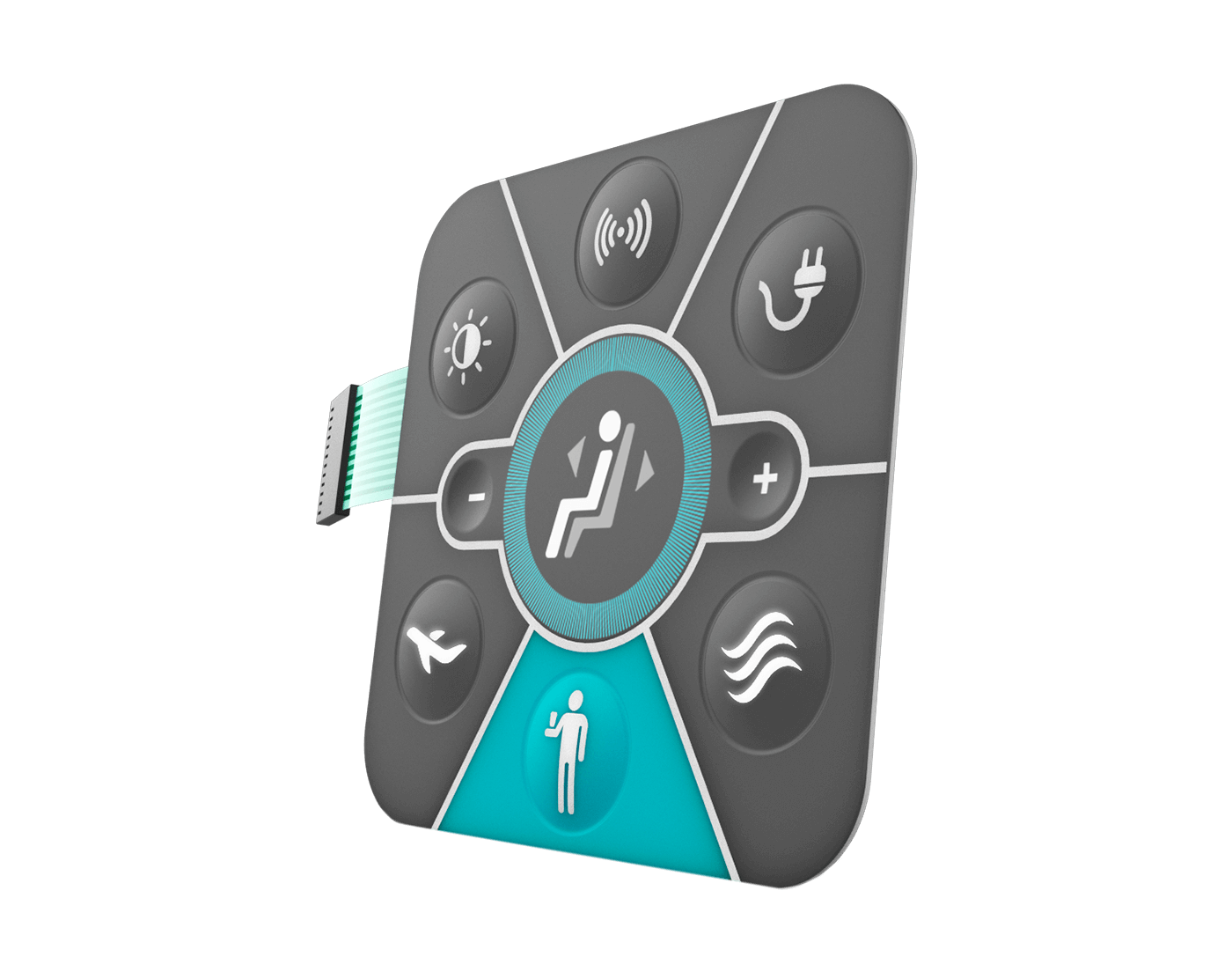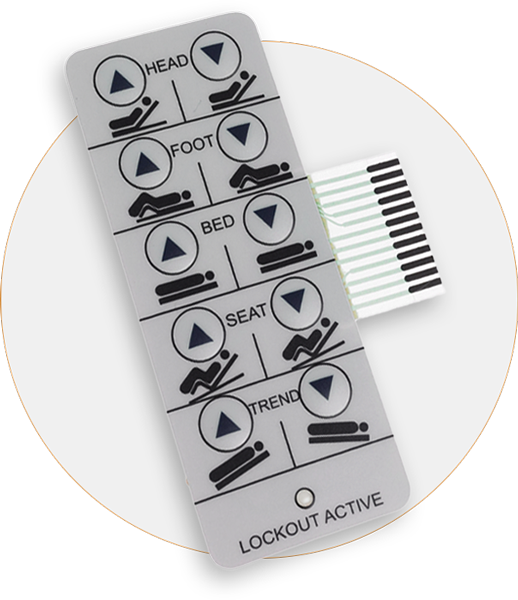Comprehending the Significance of Membrane Switches in Customer User Interfaces
Membrane switches are integral parts in the layout of reliable interface, assisting in not just functionality but also improving aesthetic appeal and individual communication. Their distinct attributes, such as resistance to ecological factors and adjustable layouts, make them ideal for a varied array of applications across several sectors. As we discover the numerous benefits and future fads connected with Membrane technology, it comes to be clear that these switches are much more than just parts; they represent a convergence of development and functionality. The effects of this technology on individual experience are worth checking out additionally.
What Are Membrane Switches?

The spacer layer, which includes glue homes, enables the separation of the circuit layer from the overlay, ensuring that the button remains in a non-activated state up until pushed. When stress is put on the overlay, it presses the spacer layer, linking the gap and finishing the circuit in the underlying layer. This layout not only reduces the physical area needed for typical mechanical switches however also enhances the sturdiness of the device, as Membrane buttons are generally resistant to dust, dampness, and various other environmental factors.
Typically located in applications varying from consumer electronics to clinical gadgets, Membrane switches are essential to contemporary innovation, offering a efficient and easy to use interface that aligns with contemporary layout requirements.
Advantages of Membrane Buttons
While many switch innovations exist, Membrane Switches deal distinct advantages that make them especially desirable in various applications. One of the primary advantages of Membrane switches is their portable layout, which permits space-saving applications in devices where property is limited. Their thin profile not only boosts visual allure but likewise facilitates lightweight building.
An additional substantial advantage is their resistance to ecological elements. Membrane switches are generally sealed versus dampness, dust, and pollutants, making them suitable for usage popular settings, such as medical tools and commercial devices. This durability prolongs the lifespan of the button, reducing upkeep prices and boosting integrity.
Additionally, Membrane buttons can be customized to satisfy specific style requirements, integrating one-of-a-kind graphics and colors that boost individual interaction. Their responsive feedback options can additionally be tailored to offer a gratifying individual experience. Furthermore, Membrane buttons are cost-efficient, especially in high-volume applications, as they can be created effectively.
Applications in Numerous Industries

In the customer electronic devices sector, Membrane switches prevail in devices such as microwaves, washing machines, and push-button controls. Their responsive responses and aesthetic choices boost user experience while providing a smooth, modern look. check my site Furthermore, vehicle producers use Membrane switches in control panel controls and infomercial systems, where area is restricted, and individual interaction is critical.
Moreover, the industrial sector leverages Membrane switches in control panels for equipment and devices, permitting instinctive operation in often rough atmospheres. Their resistance to chemicals and dampness makes sure long life and dependability in these applications. In general, the adaptability of Membrane Switches contributes dramatically to their prevalent use, find more information making them essential in different technological domains.
Style Considerations for Membrane Switches

When creating Membrane switches, a number of essential factors to consider should be considered to ensure ideal capability and individual experience. To start with, the selection of materials is critical; picking sturdy, high-grade substratums can boost the switch's long life and resistance to ecological elements such as wetness and temperature variations.
Secondly, the design of the graphic overlay must focus on quality and ease of usage. Symbols and text need to be legible, and the layout needs to facilitate user-friendly communication (membrane switches). Furthermore, tactile comments is vital; integrating a responsive dome or various other systems can boost the user experience by providing physical confirmation of activation
One more crucial aspect is the button's electrical efficiency. Developers should make sure that the conductive traces are properly designed to decrease resistance and avoid signal disturbance. This involves analyzing the called for actuation pressure and ensuring compatibility with the electronic components they will interface with.

Future Patterns in Membrane Innovation
As modern technology remains to breakthrough, Membrane switches are poised to advance dramatically, driven by advancements in products and manufacturing strategies. One emerging pattern is the unification of sophisticated materials, such as conductive inks and versatile substratums, which enhance sturdiness and minimize the total weight of Membrane switches. These materials not only enhance the tactile action yet likewise permit for the layout of buttons that can endure harsher ecological problems.
Furthermore, the assimilation of touch-sensitive technologies is transforming standard Membrane Switches into more interactive interface. Capacitive touch sensors installed within Membrane button panels can provide a more receptive and instinctive customer experience, straightening with the growing demand for sleek, modern-day designs in consumer electronics.
In addition, innovations in printing strategies, such as electronic and 3D printing, allow rapid prototyping and personalization of Membrane switches. This adaptability permits manufacturers to respond more quickly to market demands and customer preferences.
Lastly, sustainability is becoming a significant emphasis, with manufacturers discovering eco-friendly materials and procedures. As these fads unravel, the future of Membrane technology assures enhanced functionality, visual allure, and ecological responsibility, solidifying their function in advanced customer interfaces throughout various industries.
Conclusion
Finally, Membrane Switches represent an essential element in the design of user interfaces, incorporating performance with visual flexibility. Their benefits, including look these up durability and resistance to ecological aspects, make them suitable for varied applications across various markets. Thoughtful design factors to consider enhance individual communication and experience. As innovations in technology continue, the development of Membrane switches is anticipated to more refine interface, driving technology and improving functionality in a significantly intricate technical landscape.
Membrane buttons are integral components in the style of effective user interfaces, facilitating not only functionality but additionally improving aesthetic allure and customer communication.Membrane Switches serve as an essential element in various customer interfaces, helping with a smooth communication between users and electronic devices.While countless button modern technologies exist, Membrane Switches offer unique benefits that make them especially desirable in various applications.Additionally, Membrane switches can be customized to meet specific layout demands, incorporating one-of-a-kind graphics and shades that boost user communication.In final thought, Membrane Switches represent an essential part in the layout of individual interfaces, integrating capability with visual versatility.